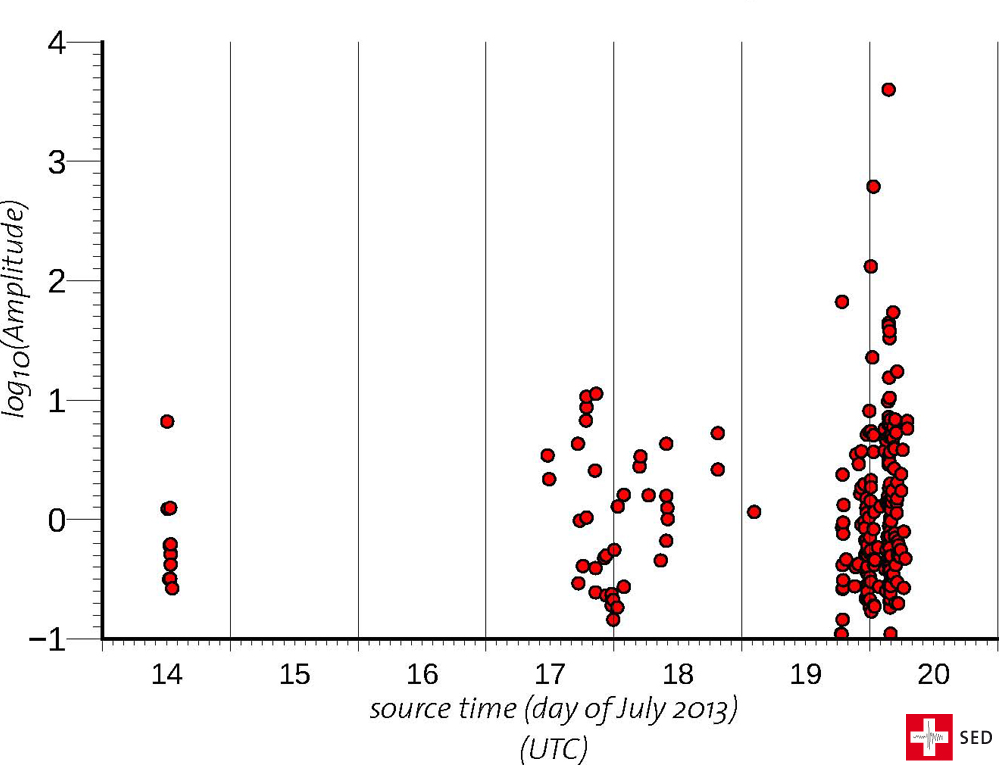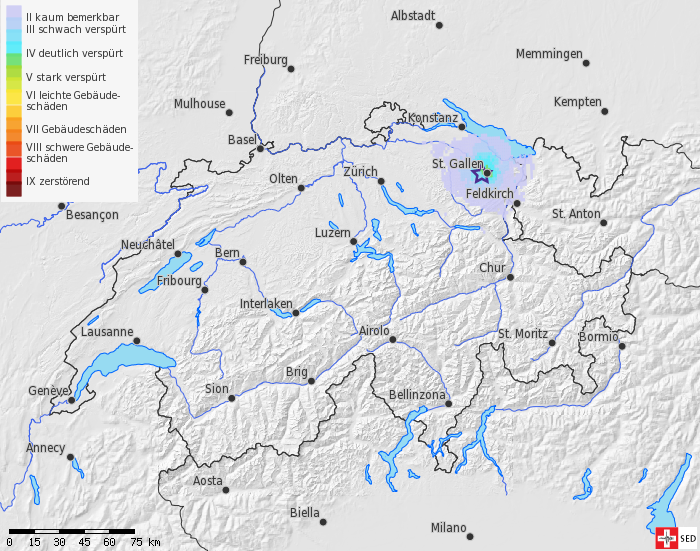Test and simulation activities carried out as part of the planned geothermal energy project in Sittertobel near St. Gallen began on July 14, 2013. A series of related microearthquakes was registered between July 14 and 19, with the strongest reaching a local magnitude of 0.9 on the Richter magnitude scale. These small quakes occurred near to the base of the borehole, at a depth of approximately four kilometers, and were too weak to be felt by local residents. The scope of the earthquakes was as had been anticipated.
Seismic activity started to increase on the evening of July 19, 2013, with the earthquakes becoming stronger and more frequent. At the same time, the pressure in the borehole mounted, most likely due to the gas that had penetrated into it. The strongest earthquake by far, with a magnitude of 3.6, occurred at 5.30 a.m. local time on the morning of July 20, 2013, and was also registered at a depth of four kilometers. The quakes continued until around 11 a.m., but were subsequently significantly weaker (magnitudes of below 1.5).
Read more...The earthquake with a magnitude of 3.6 was felt within a radius of approximately 15 kilometers. By Saturday morning, the Swiss Seismological Service had received notifications from some 400 residents.
No damage is generally anticipated following an earthquake of this magnitude, which would broadly appear to be the case for the earthquake on Saturday morning, with only a few reports of cracks in plaster having been received.
Further microearthquakes are likely to occur during the coming days. It cannot be ruled out, however, that stronger quakes will be felt and damage will occur. Currently (as of the afternoon of July 20, 2013), seismic activity has declined significantly, due to the normalization of pressure in the borehole.
The on-call service from the Swiss Seismological Service (SED) is monitoring seismic activity around the clock, and spent the night of July 19 to 20, 2013, in close contact with the individuals responsible in St. Gallen. The SED will provide up-to-date information on a regular basis and investigate the earthquakes in greater detail.

